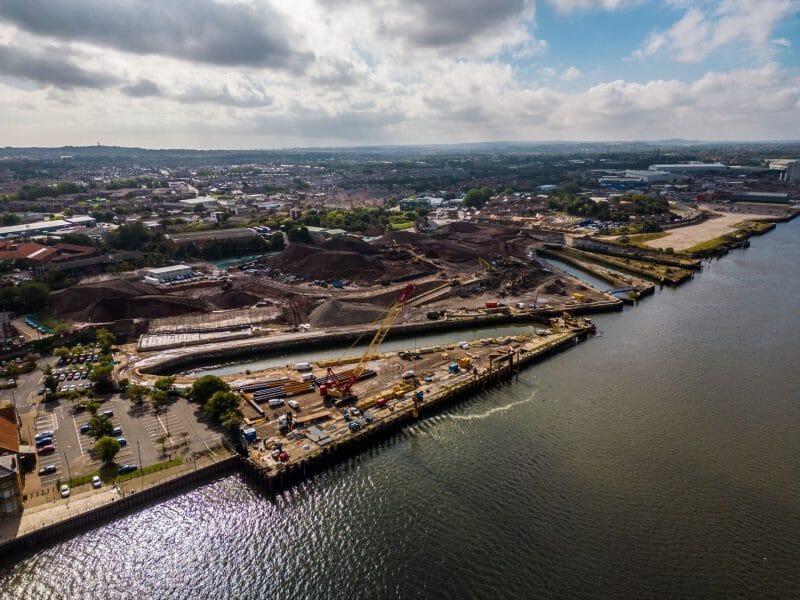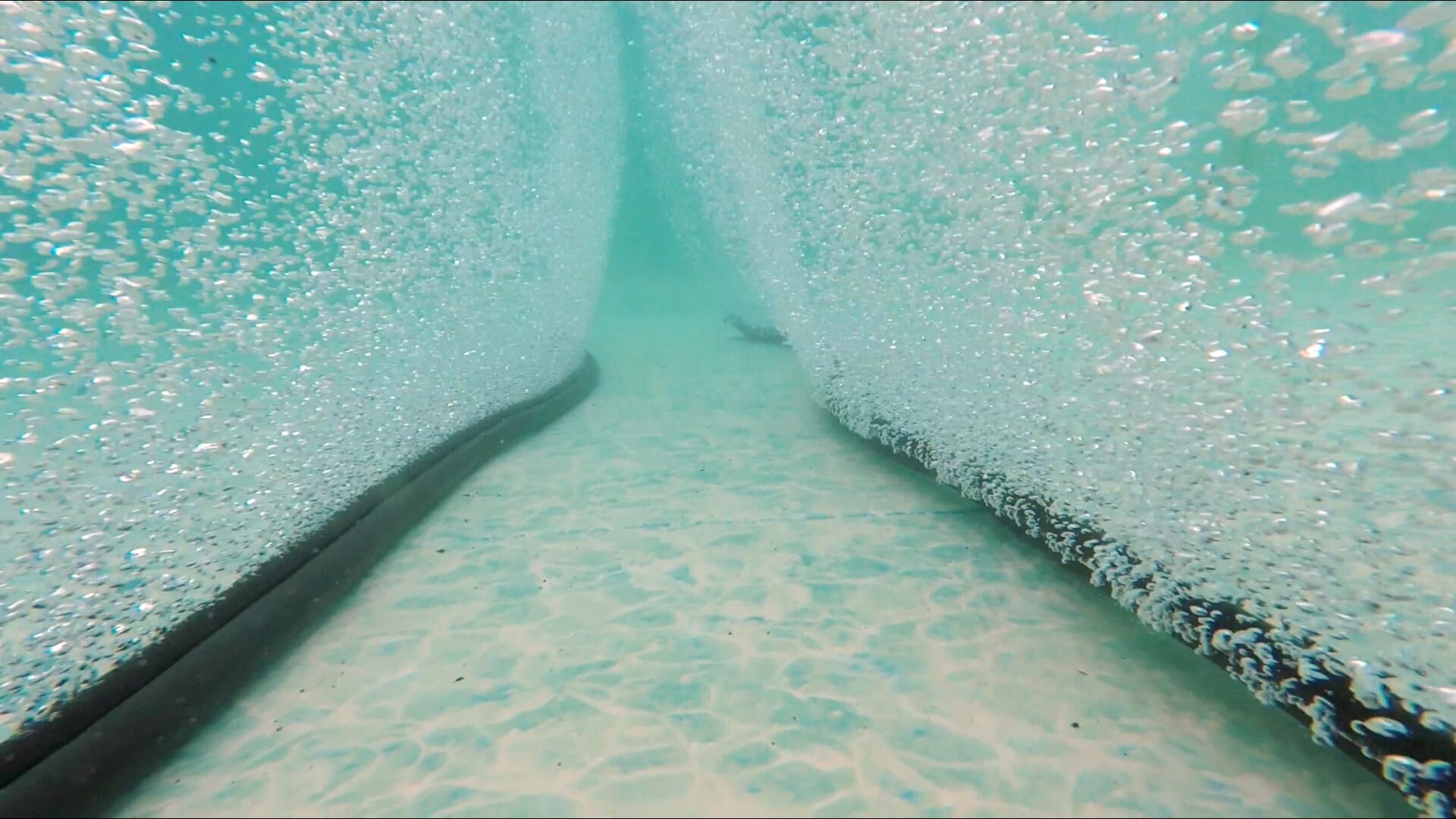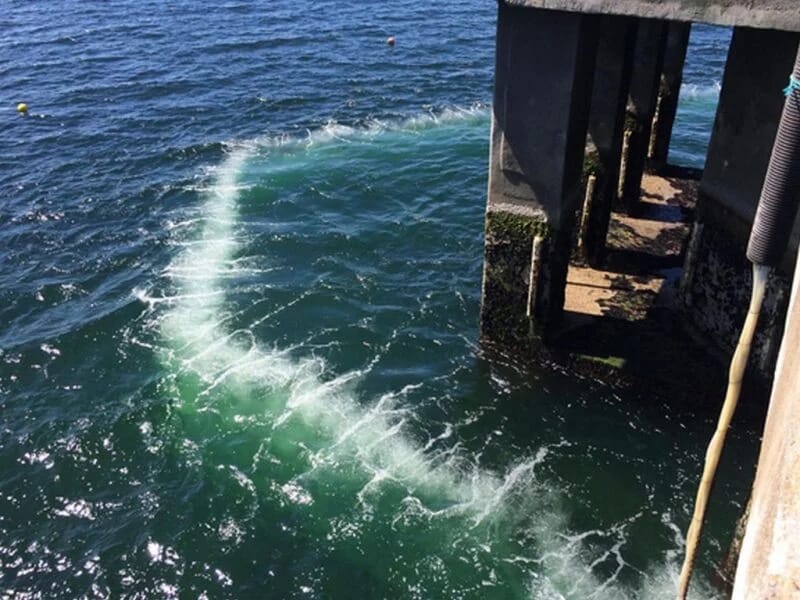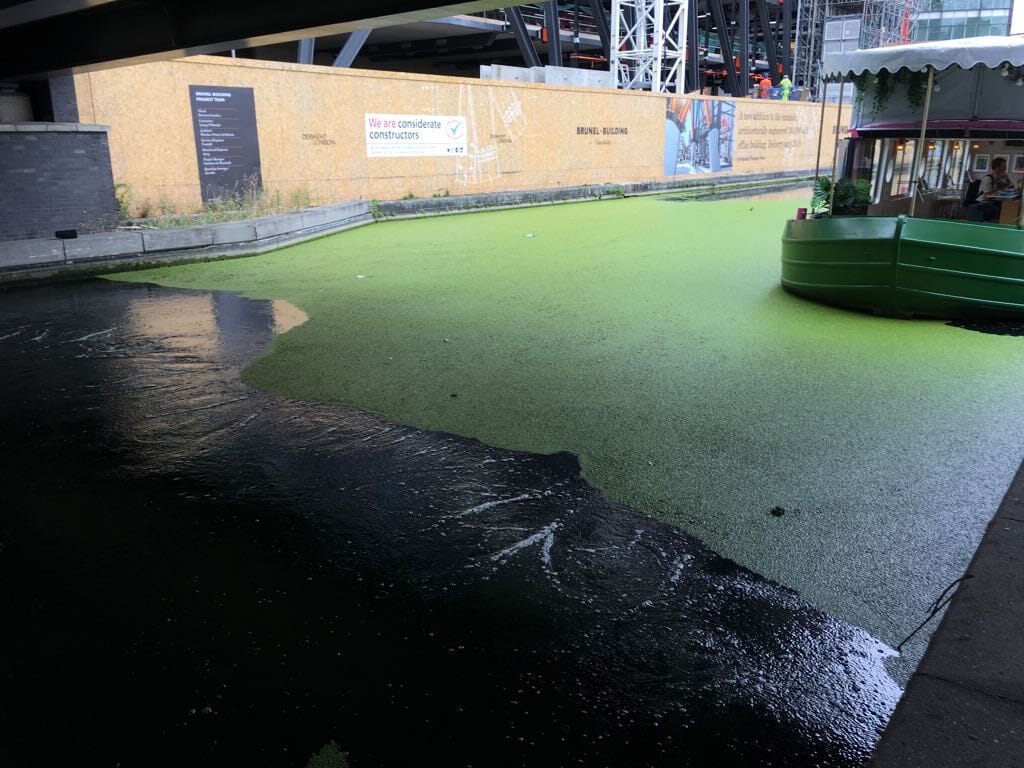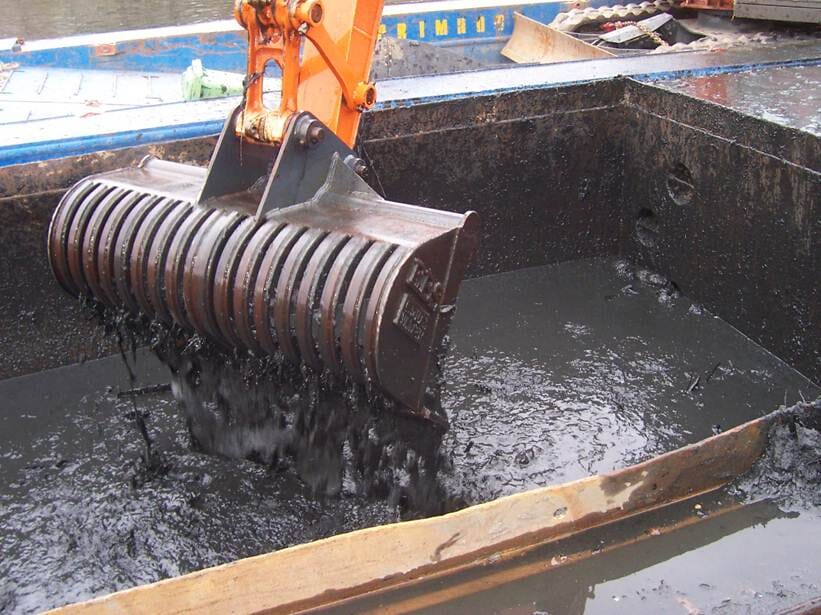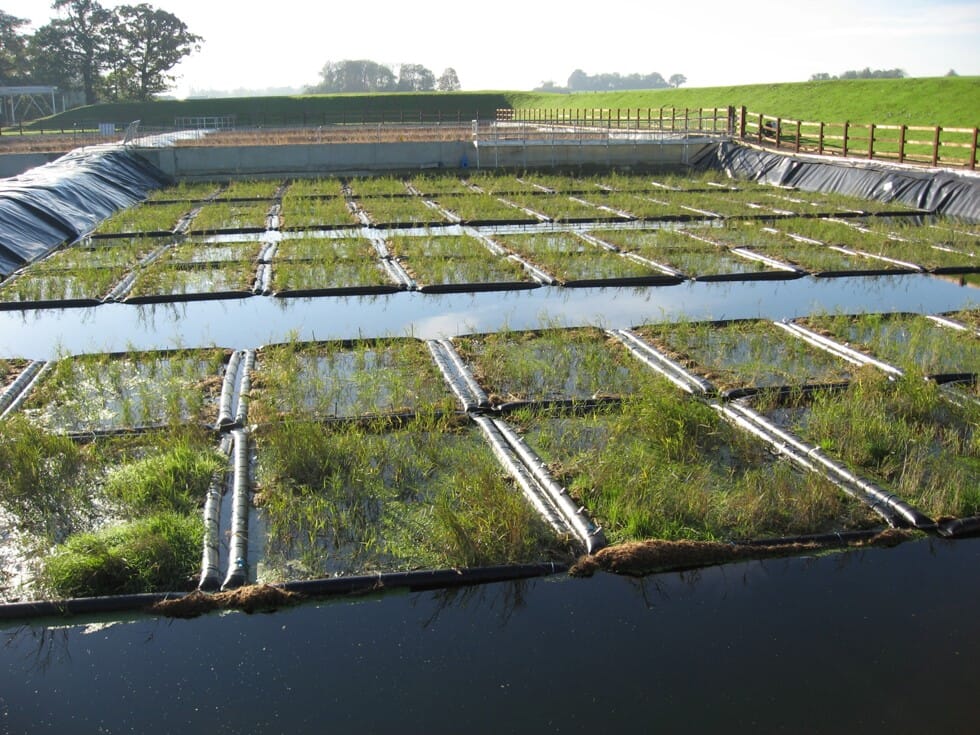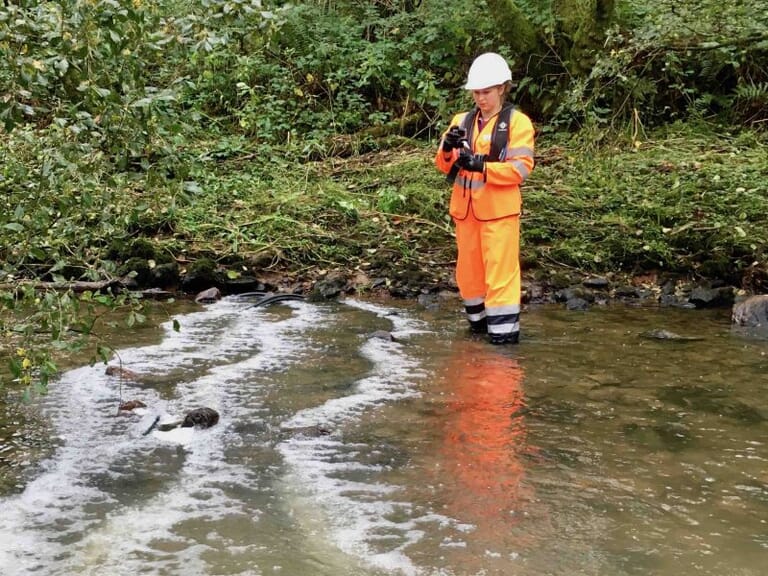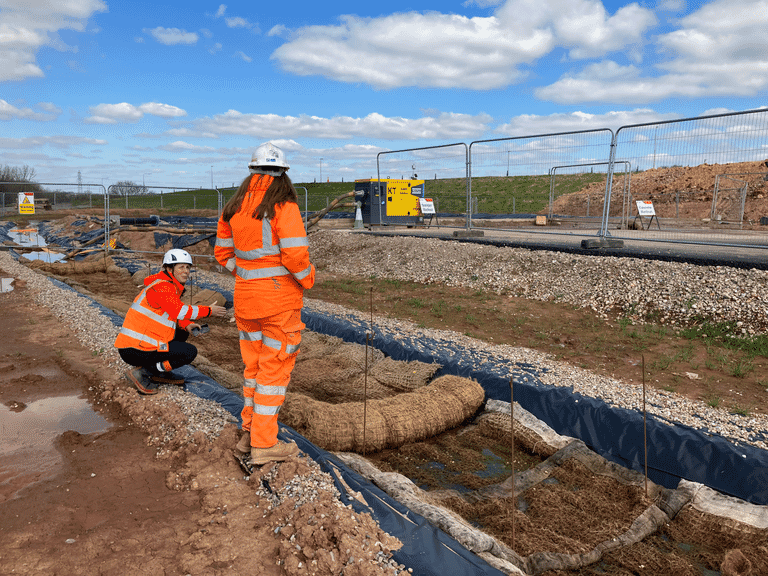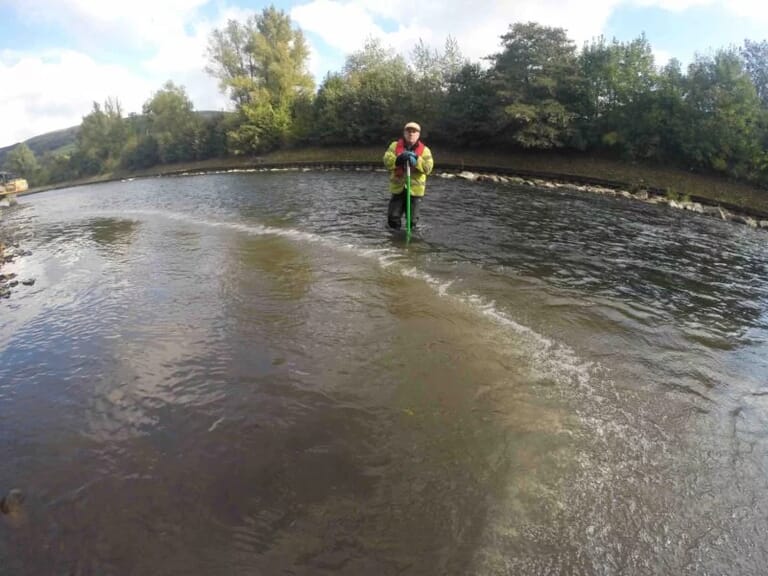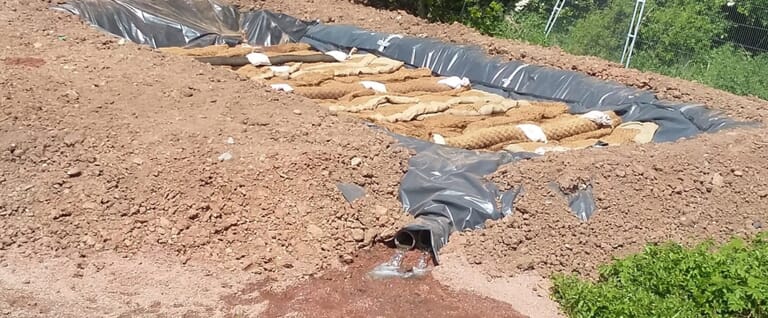Here at Frog Environmental, we’re proud to work with world class suppliers to bring high performing water quality and pollution prevention products to the UK and Europe. You can download the findings of this research paper at the top of this page.
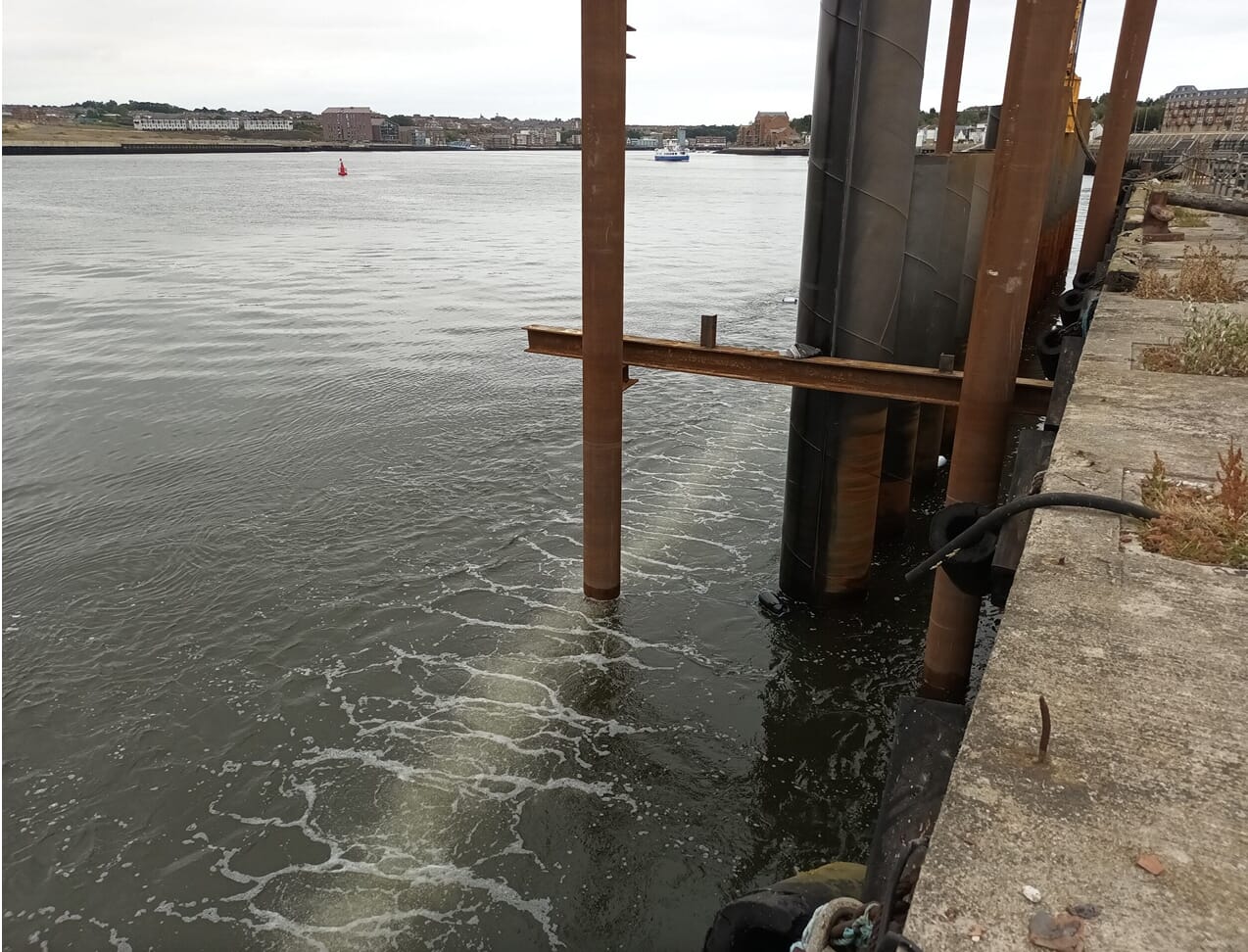
Noise reduction by an air bubble curtain in offshore pile driving
Research abstract
Underwater noise pollution is a by-product of marine industrial operations. In particular, the noise generated when a foundation pile is driven into the soil with an impact hammer is considered to be harmful for the aquatic species. In an attempt to reduce the ecological footprint, several noise mitigation techniques have been investigated. Among the various solutions proposed, the air-bubble curtain is often applied due to its efficacy in noise reduction.
In this paper, a model is proposed for the investigation of the sound reduction during marine piling when an air-bubble curtain is placed around the pile. The model consists of the pile, the surrounding water and soil media, and the air-bubble curtain which is positioned at a certain distance from the pile surface. The solution approach is semi-analytical and is based on the dynamic sub-structuring technique and the modal decomposition method.
Two main results of the paper can be distinguished. First, a new model is proposed that can be used for predictions of the noise levels in a computationally efficient manner. Second, an analysis is presented of the principal mechanisms that are responsible for the noise reduction due to the application of the air-bubble curtain in marine piling. The understanding of these mechanisms turns to be crucial for the exploitation of the maximum efficiency of the system.
It is shown that the principal mechanism of noise reduction depends strongly on the frequency content of the radiated sound and the characteristics of the bubbly medium. For piles of large diameter which radiate most of the acoustic energy at relatively low frequencies, the noise reduction is mainly attributed to the mismatch of the acoustic impedances between the seawater and the bubbly layer. On the contrary, for smaller piles and when the radiated acoustic energy is concentrated at frequencies close to, or higher than, the resonance frequency of the air bubbles, the sound absorption within the bubbly layer becomes critical.
